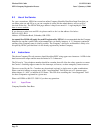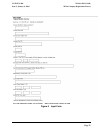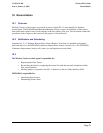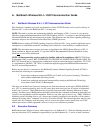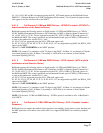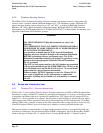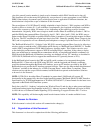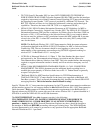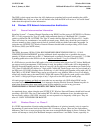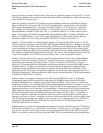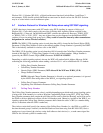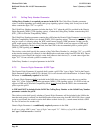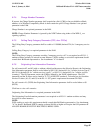
Wireless E911 Guide CG-EWCG-001
BellSouth Wireless E9–1–1/SS7 Interconnection
Guide
Issue 3, January 6, 2004
A.2.2 Database Steering Options
The NENA 05-501 document also defines data base steering options that are used to interconnect the
wireless carrier’s network with the BellSouth Enhanced 9-1-1 ALI Database systems. BellSouth will
support the data steering options referred to as "E2" and "E2+", as defined in BellSouth Technical
Reference TR 73610, and in the Intrado technical document "BellSouth SR/ALI to MPC Interface
Specifications for TCP/IP Implementation of TIA/EIA/J-STD-036 E2" (Contact Intrado for the latest issue
supported on BellSouth ALI Data Base systems).
WARNING
The MOST IMPORTANT thing this document can relay is the
following:
IT IS IMPERATIVE THAT ALL PARTIES UNDERSTAND WHAT
IS REQUIRED TO MAKE WIRELESS E9-1-1 WORK PROPERLY
IN AN SS7/ISUP ENVIRONMENT.
Any questions or doubts that the WSPs Network/Translations
Engineer may have, should be brought to the attention of BellSouth
BEFORE proceeding with any provisioning steps. The WSPs
BellSouth Account Representative will arrange to get answers to any
questions from the appropriate BellSouth Network/Translations
E9-1-1 personnel.
The WSP (or their agent) must have the ALI database pre-populated
with records matching the pANIs (ESRD/ESRK) they will use, or the
call will default route, and the PSAP will receive a "no record found"
rather than the expected location information.
Failure to deploy SS7/ISUP signaling correctly for Wireless E9-1-1
may result in significant service interruptions or undesirable
anomalies, including but not limited to, a total inability to complete
the call.
A.3 Scope and introductory text
A.3.1 Wireless E9-1-1 Service Introduction
Wireless E9-1-1 service enables Wireless Service Providers (referred to as WSP or WSPs throughout this
document) to comply with the FCC mandate for providing an Enhanced 9-1-1 service to wireless users that
is somewhat equivalent to the service provided to landline users. FCC Docket 94-102 requires WSPs to
make E9-1-1 service available in two phases. The first phase of 94-102 (Phase I, initially effective April 1,
1998) requires each WSP to provide a Public Safety Answering Point (PSAP) with the caller’s Call Back
Number (CBN), and a "general" location of the caller equivalent to the serving cell site or sector, but only
if the PSAP requests Phase I service in writing and is capable of receiving and utilizing the data.
That general location is represented by a 10 digit number generally known as a psuedoANI (pANI), but
also known as Emergency Services Routing Digits (ESRD) or Emergency Services Routing Key (ESRK)
based on the type of wireless E9-1-1 solution in use. From the BellSouth E9-1-1 Tandem’s point of
Page 78



